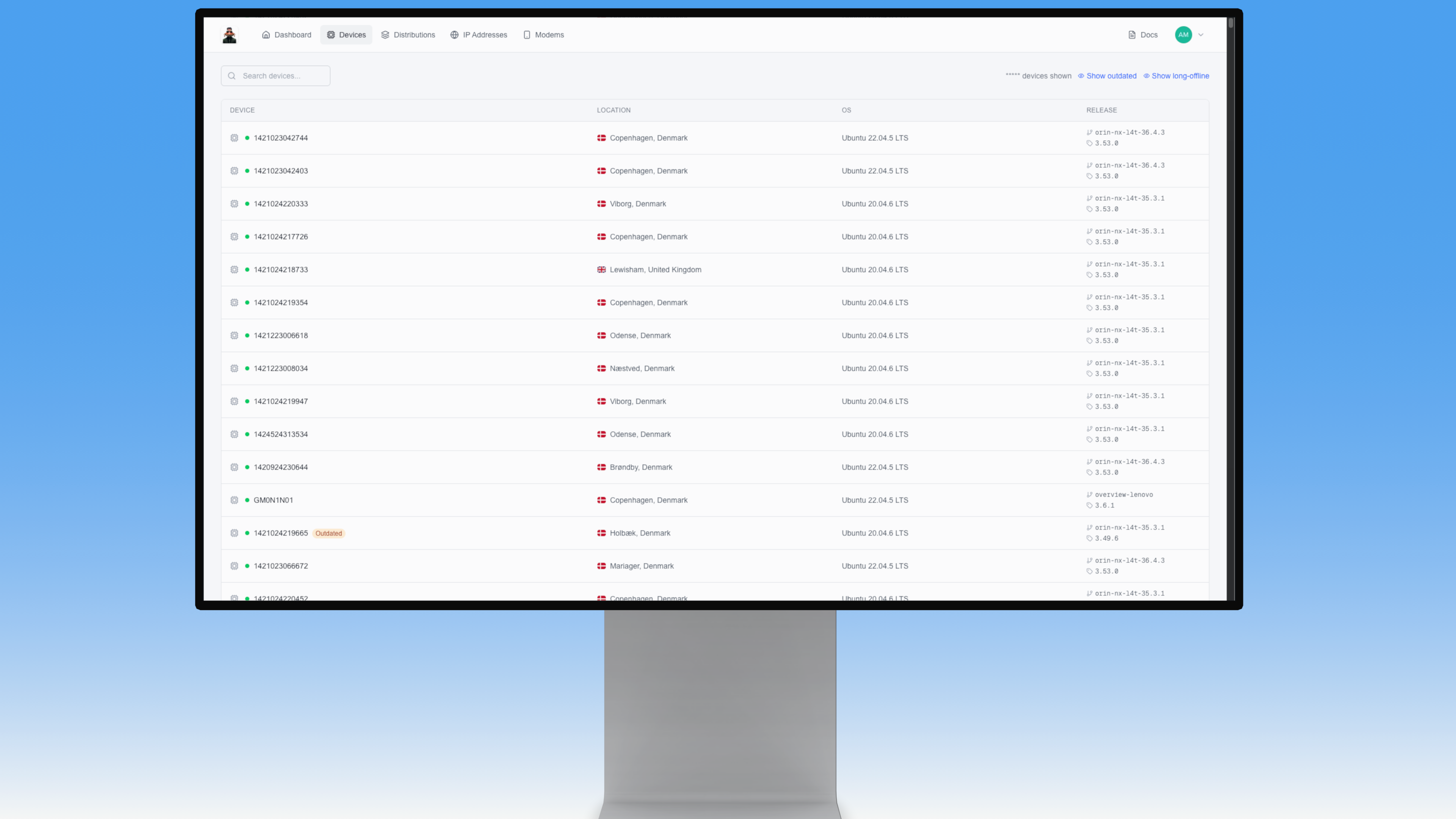From Hundreds to Thousands: Open-Sourcing Smith, Our Healthcare Fleet Management System

TL;DR: We grew from managing a few hundred devices to thousands across healthcare facilities, built our own fleet management system in Rust, and we're now open-sourcing it. Smith handles device deployment, monitoring, and updates for our AI-powered patient monitoring platform at scale.
A month ago, we silently released the open source version of Smith, our homegrown fleet management platform. And we learned a thing or two via the feedback we received. So, I wanted to take this opportunity to further explain what we’re trying to do with Smith.
Our Case Study
Two years ago, Teton was managing a few hundred AI-powered sensors across Danish healthcare facilities. Today, we're orchestrating thousands of devices across hospitals, care homes, and senior living facilities. A 10x growth that fundamentally changed how we think about infrastructure.
These aren't just any devices. Each sensor runs computer vision models that monitor patient activity in real-time, helping care staff prevent falls, optimize sleep, and provide better patient care. In critical care environments, sensor downtime is non-negotiable. It's not just a monitoring gap, it's a potential safety risk.
Why We're Open-Sourcing Smith
Smith is mission-critical to Teton's operations—it delivers > 99% uptime and seamless upgrade/rollback capabilities our customers depend on. But here's the thing: fleet management isn't our core product. Our mission is transforming patient care through AI-powered monitoring, not building proprietary infrastructure tools.
The trust we build with customer IT departments by being transparent about our deployment processes far outweighs any theoretical competitive advantage of keeping Smith closed-source. When hospital administrators can inspect exactly how we manage updates and monitor devices in their critical care environments, it builds the confidence needed for healthcare adoption.
More fundamentally, we couldn't find anything that fit our use case, and we don't believe we're unique. Other IoT technology companies, IoT manufacturers, and infrastructure teams worldwide face similar challenges: managing distributed fleets reliably, safely, and cost-effectively.
Making Smith open-source lets us build a stronger community around what brings reliability to our customers. That's net positive for the world. We already contribute to better patient outcomes through our monitoring platform—now we can also contribute to the engineering community that builds the infrastructure healthcare depends on.
The Road Ahead
Smith 0.2 is just the beginning. We're actively developing a comprehensive Smith CLI and dashboard similar to the Kubernetes landscape to make fleet management more streamlined and intuitive.
Our vision for Smith is making it increasingly stateless and extensible, ideally reaching near-zero manual operations on individual devices. Think "set it and forget it" reliability.
We'd welcome any suggestions, feature requests, or contributions through our GitHub community discussions. The best infrastructure tools are built through collaboration with the engineers who use them daily.
Get involved!
Building healthcare infrastructure at scale requires exceptional engineers who care about impact.
Whether you're managing a fleet of IoT devices, have experience with distributed systems, or just want to contribute to critical healthcare infrastructure—we'd love your help.
Check out our GitHub repository, dive into the issues, and submit a PR. Every contribution, from documentation improvements to new features, helps make Smith better for the entire community.
And if you're passionate about building healthcare infrastructure at scale and want to work on these challenges full-time, check out our careers page to see our open positions.

.jpg)

